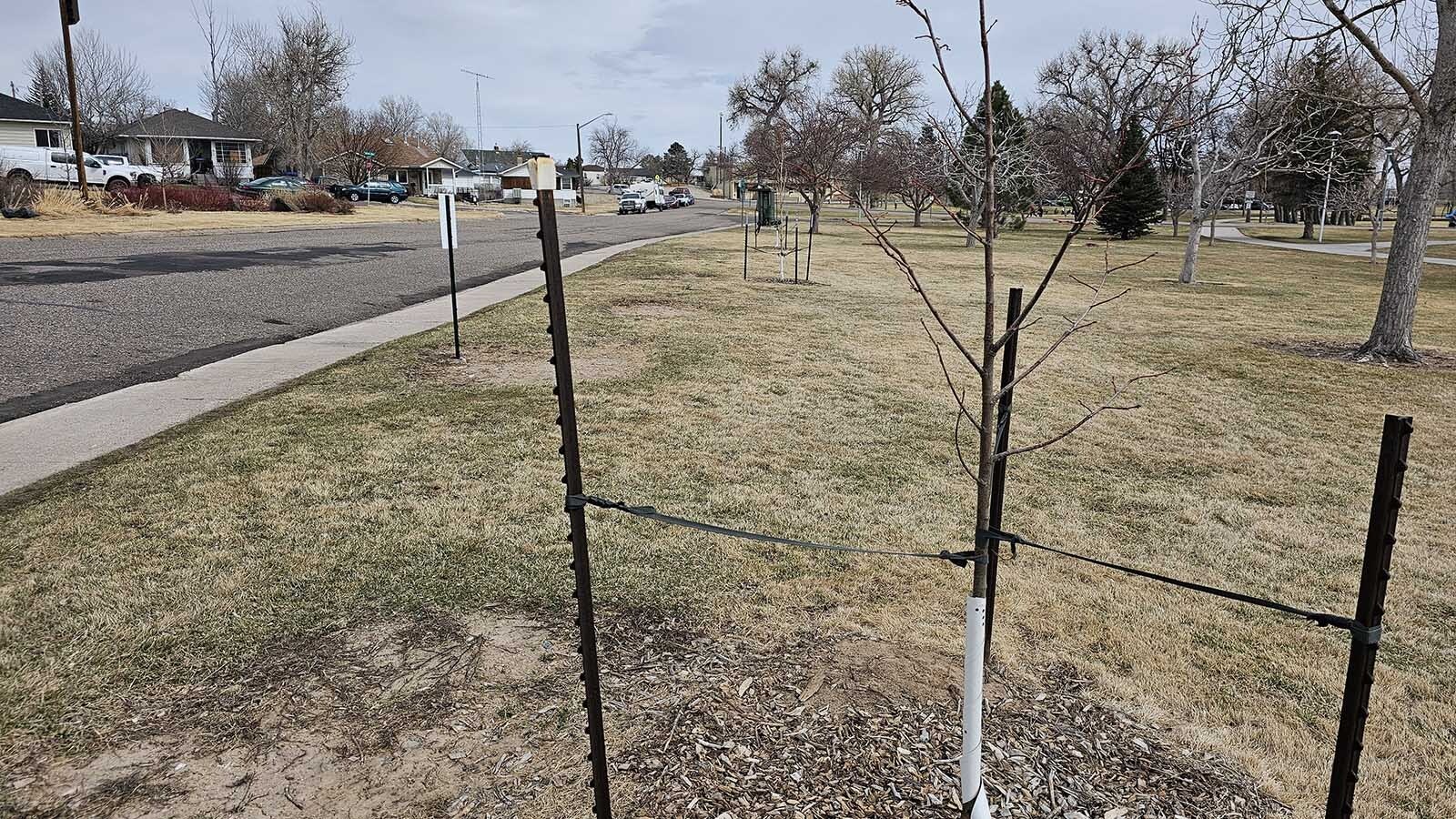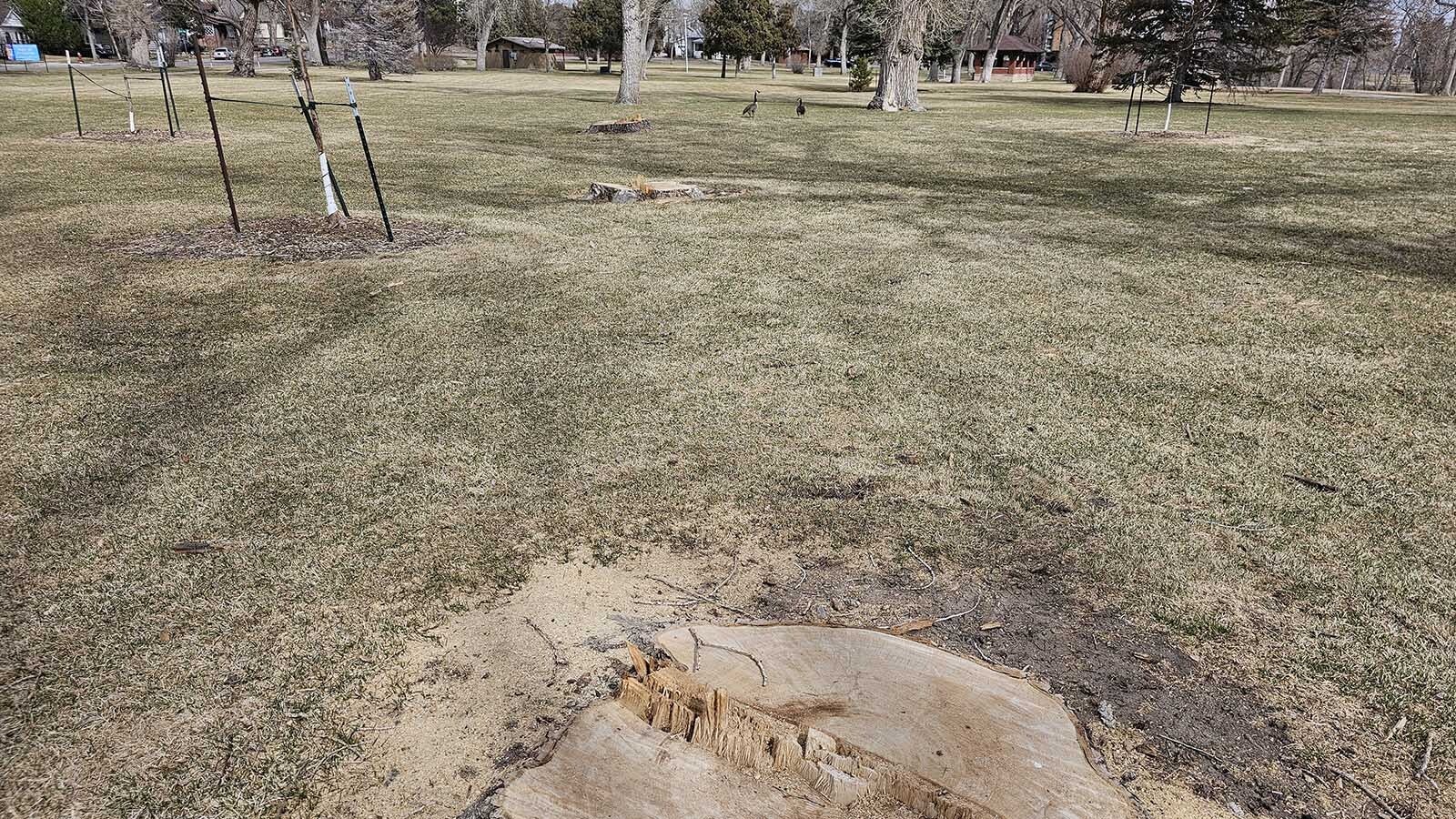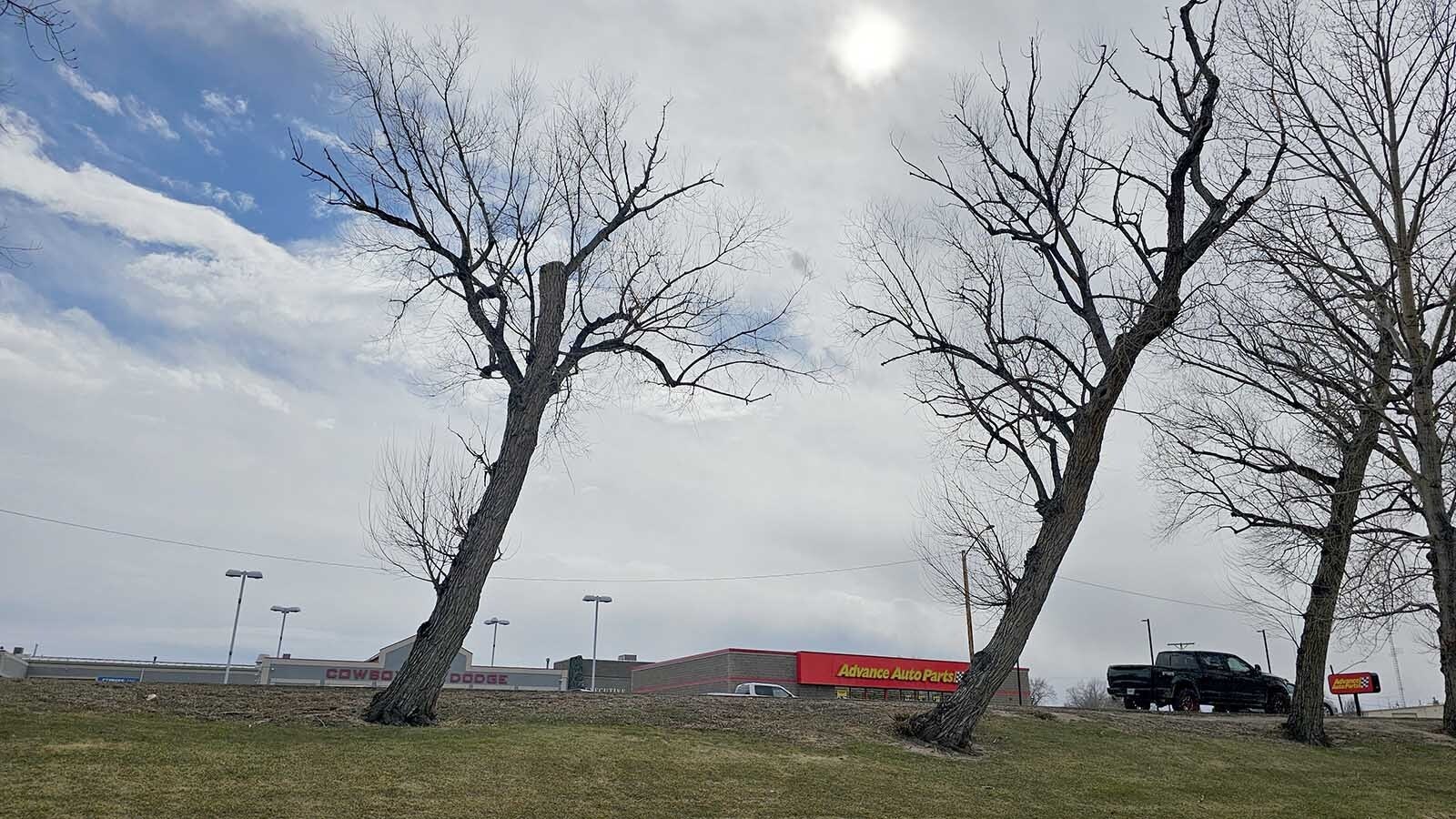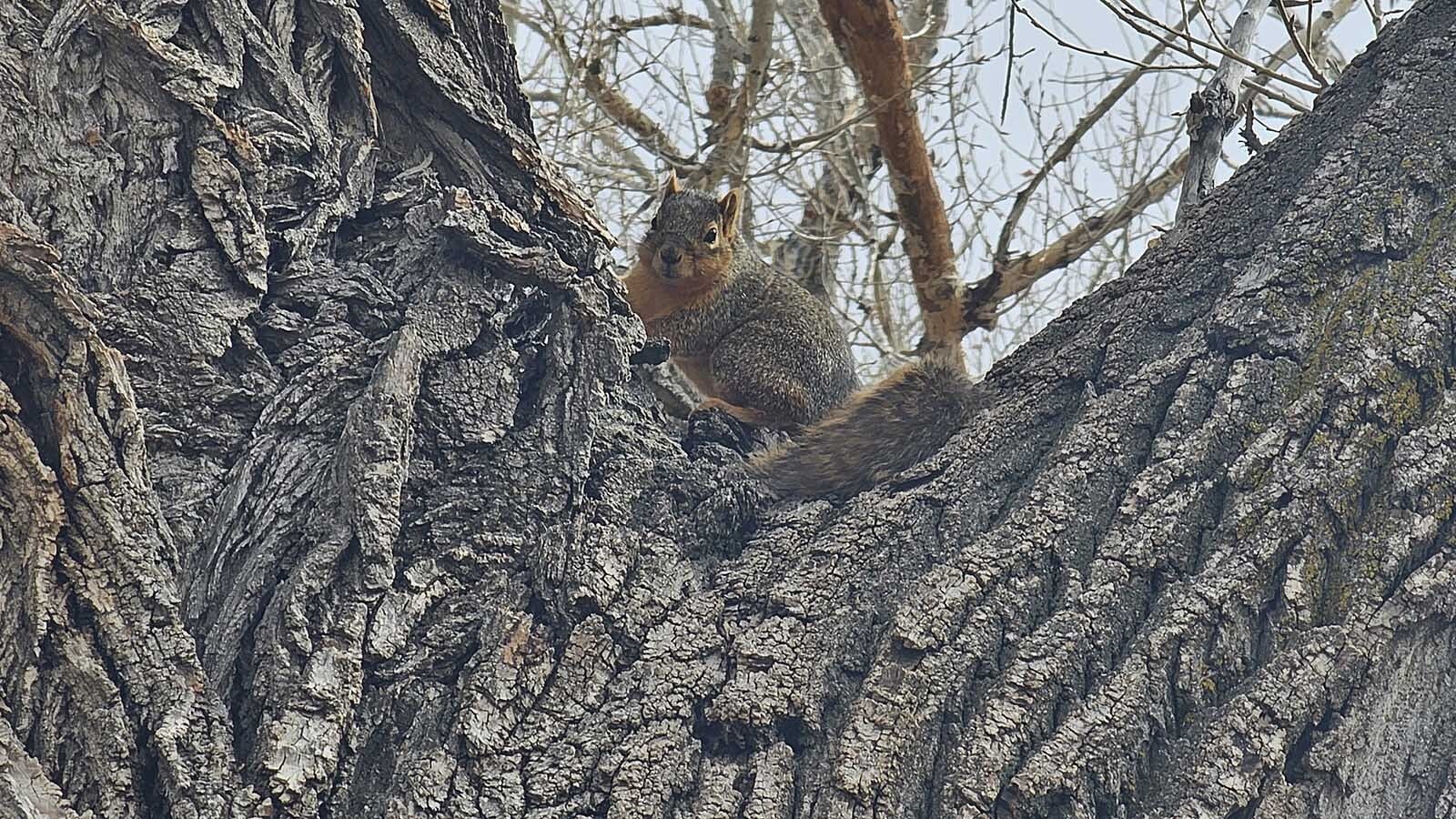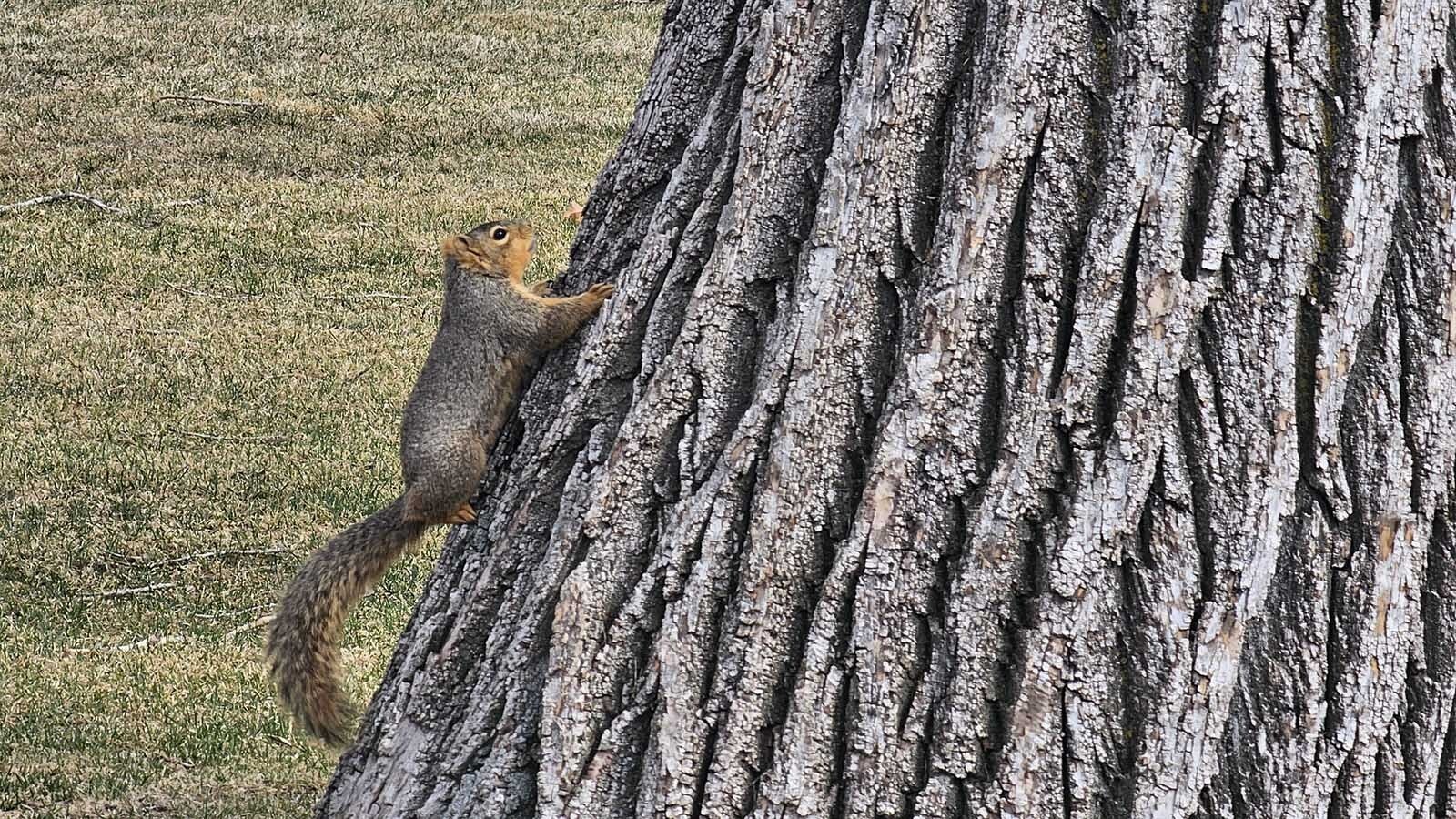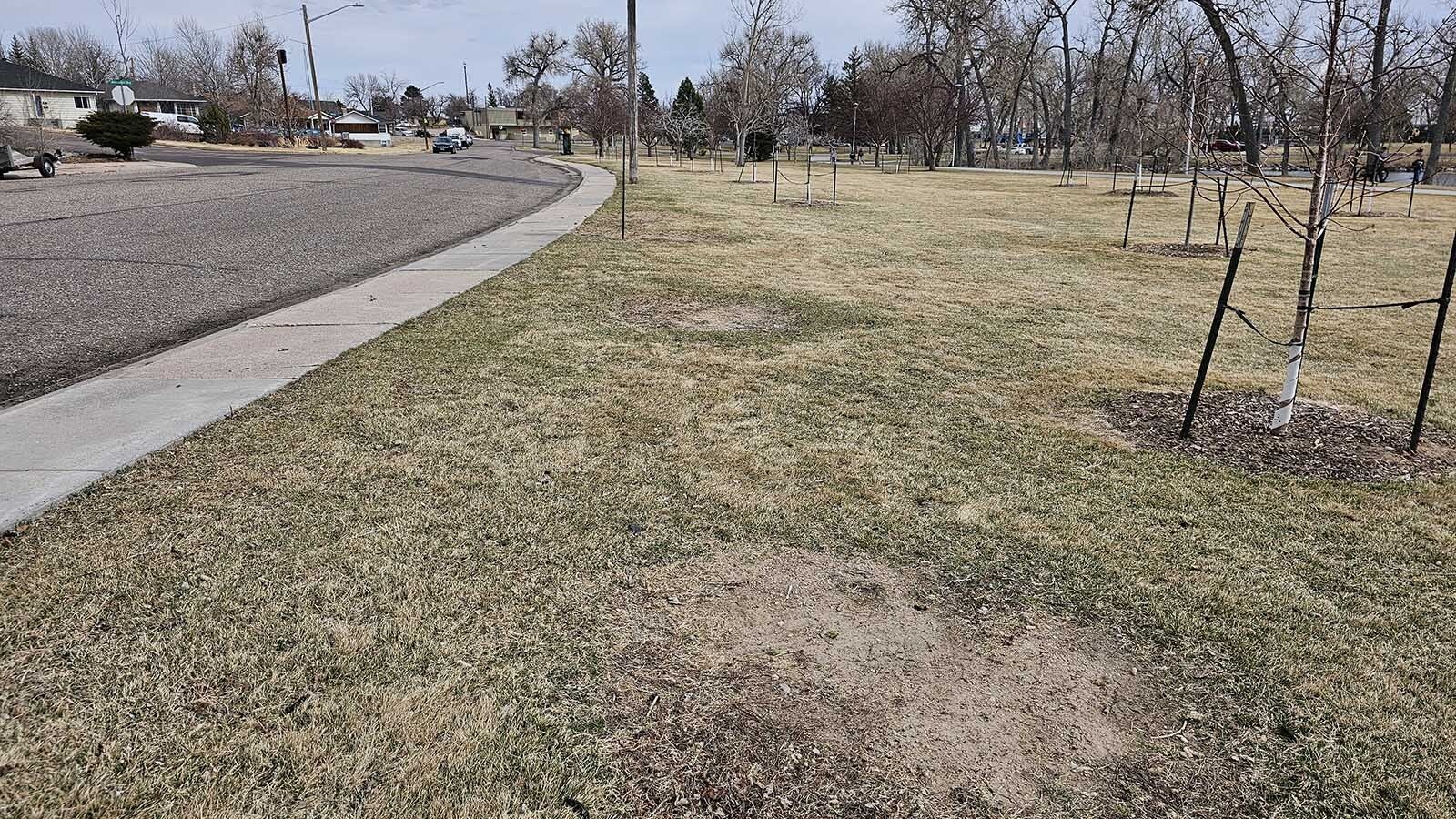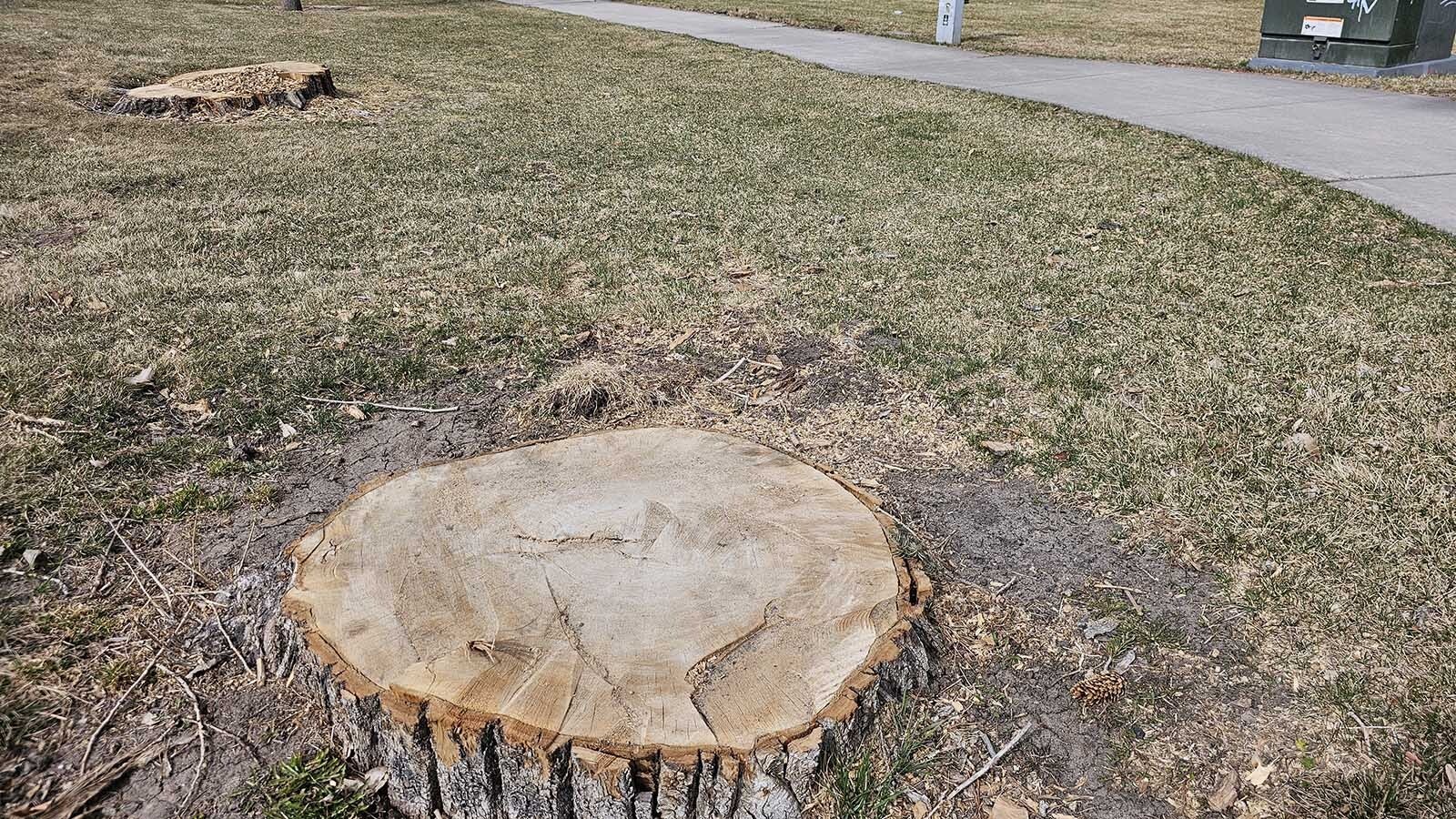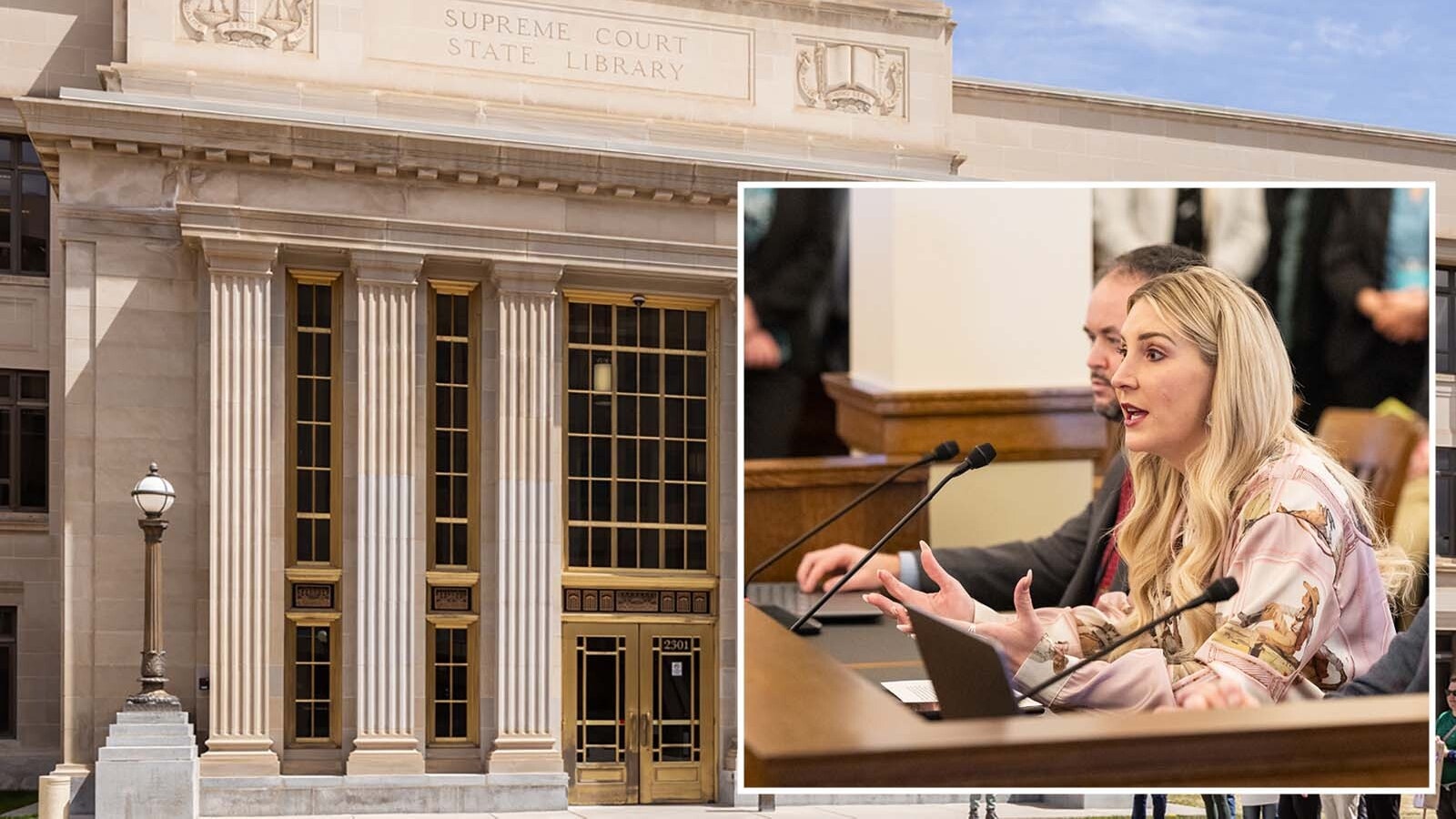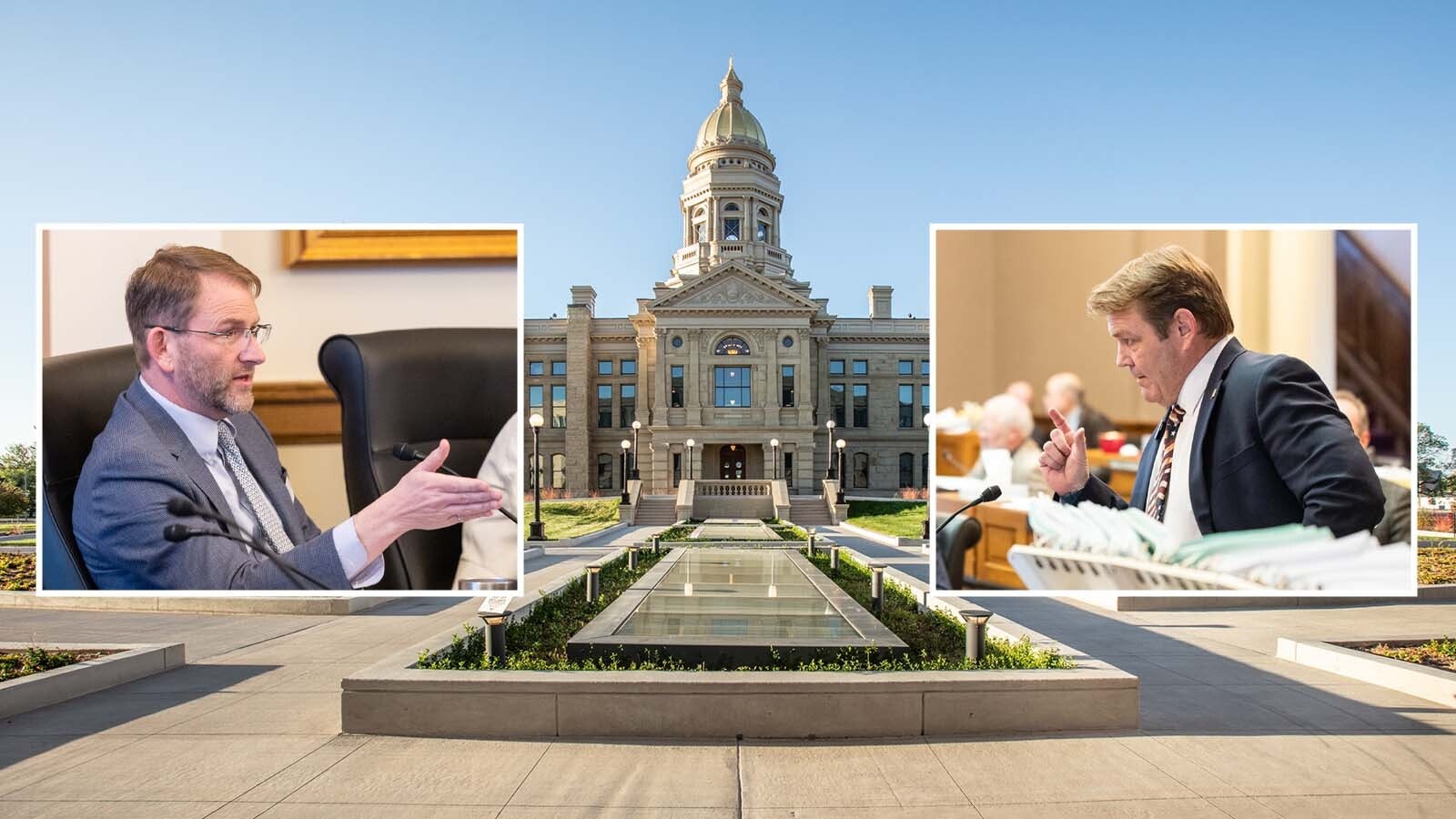CHEYENNE — One of the summer traditions Buck McVeigh used to treasure was the return of nesting black-crowned night herons in the huge, mature cottonwoods near his home by Holliday Park.
“But the city of Cheyenne took down 21 beautiful trees that used to harbor these herons, and now all of them are gone,” McVeigh said. “And it’s just sickening to watch.”
The trees removed by a city contractor were all cottonwoods, McVeigh told Cowboy State Daily. City officials have said that the trees were just too old, nearing the end of their lifespan and needed to come down for the safety of the public.
But since those trees in Holliday Park were removed, McVeigh has noticed more of what he describes as “clear-cutting” of cottonwood trees at other places across Cheyenne. He’s concerned about how losing so many large trees will impact shade and habitat for the town’s parks and cemeteries, and he also hates that so many of Wyoming’s state trees are coming down.
“Lakeview cemetery used to be an absolutely gorgeous walk,” McVeigh said. “I mean, they used to have these tours that would go through the cemetery in the summertime, and it was a complete canopy. Now if you count the number of cottonwoods left, it’s under 10. It’s horrible.”
McVeigh acknowledges he’s been told the trees were a hazard because of their age.
“But what were they a hazard to, the tombstones?” McVeigh said.
McVeigh said he’s sent pictures of the cottonwood stumps after the trees were cut down to arborists, asking if they can spot anything wrong with the trees that were taken down.
Stumped
So far, McVeigh said he’s been told that the stumps looked like they came from healthy, disease-free trees.
“They’re calling them aged,” McVeigh said. “Well, yeah, I’m also much older than I was, you know, years ago, but (other than age) there’s nothing wrong with those trees in there.”
McVeigh has been told the replacement trees won’t likely be cottonwoods.
“It’s like a war on our state tree,” McVeigh said. “And I think we’re up to, you know, 160 big cottonwoods gone between all the parks. They’ve taken a bunch down in Lions Park, too, and I think they’re even working in the city golf courses.”
Besides the loss of so many of Wyoming’s state tree from the capital city, McVeigh is also concerned about the loss of shade and beauty, which will take 40-some years to replace, stretching out over an entire generation.
“The city forester flat-out told me he inherited this problem, and that the city had no plan in place for a second canopy,” McVeigh said.
To McVeigh, this makes the sudden loss of so many seemingly healthy trees all at once even less understandable. He wonders why the city doesn’t wait to take out some of these trees if there aren’t any immediately apparent problems.
And he also questions the costs. At an average of $2,500 per tree, McVeigh estimates Cheyenne has spent at least $400,000 cutting down seemingly healthy cottonwoods.
“(Someone) is making big money on this stuff at our expense,” McVeigh said. “And the replacement trees, we won’t have them back again in our lifetimes, or even our kids’ lifetimes. It’s going to take 40 years before any of these seedlings they planted, if they survive, (will) provide any kind of shade.”
Decline, Overpopulation And Squirrels
City Forester Mark Ellison confirmed with Cowboy State Daily that the city has taken down a number of cottonwood trees across Cheyenne, and agreed it is lamentable.
The problem, though, isn’t any lack of love for cottonwoods, he said. It’s just that the city’s cottonwoods are nearing the end of their lifespan.
“I mean, unfortunately, when our community was settled that was the primary tree that was planted in our older parks and along our streets,” he told Cowboy state Daily. “And it is a short-lived tree. It’s in the poplar family, and so it typically lives 100 to 120 years, and then it dies fairly rapidly.”
Ellison said it’s unfortunate to see so many trees lost at once, and he agrees it’s something that better planning could have prevented.
“I think we could have done better,” he said. “But you know, I’m not going to talk poorly about previous management. But I do think we could have done better.”
One thing that’s complicated Ellison’s efforts to plant new trees has been squirrels, which he said have a habit of stripping young, tender saplings during winter, killing them.
“Having a more robust tree planting program in the past would have helped,” Ellison said. “I’m not sure why that didn’t occur. Maybe it did and the trees just didn’t survive.”
Cottonwoods are the most common tree across Cheyenne, Ellis said, followed by spruce.
“There’s a reason they planted cottonwood back in the day, and that’s because it was fast-growing,” Ellison said. “I mean, imagine settling in Cheyenne on the High Plains where there’s no trees whatsoever, no protection from the elements. So, they wanted some fast-growing trees, and that’s why they planted such an abundance.”
Ellison acknowledged it’s tough to lose so many old trees at once.
“It’s tough to have to do it, but we have to keep public safety in mind,” he said. “And you know, in a lot of our older neighborhoods as well, you’re seeing cottonwoods come down, and it’s not just in Holliday Park, it’s all around town.”
Ellison said he doesn’t know how many cottonwoods have been cut down across the city so far, but confirmed there are plans to remove even more — probably about 15 to 30 trees each year.
“They’re not all going to die at the same time,” Ellison said. “But over the next, you know, five to 15 years, these neighborhoods, these parks, are all going to look drastically different.”
Diversity Is Important
Ellison is making plans to replace all of the cottonwood trees that are being cut down in one to one, and sometimes two to one ratios. But in most cases, he’s not going with cottonwoods as replacements.
Planting too many trees of one variety is something that’s been increasingly highlighted as a mistake by many experts in recent years. States in the Midwest have suffered wholesale losses of trees from Dutch elm disease, while East Coast and Midwestern states have suffered similar losses of ash trees to pests like the emerald ash borer.
Emerald ash borer has killed 40 million ash trees in Michigan alone, according to the Arbor Day Foundation.
“We’ve learned that we can’t plant monocultures anymore,” Ellison said. “And Colorado is going through the emerald ash borer epidemic there, and they are losing a lot of trees. We in Cheyenne are probably going to lose a quarter or so of our canopy as these older cottonwoods continue to come down over the next 10, 15 years or so.”
This is another case where planting a monoculture has a downside later on, Ellison suggested. Had there been more diversity in the first place, the city wouldn’t be losing so many trees at once.
So, Ellison plans to bring in more varieties — honey locust, hackberry, American linden, Ohio buckeye, box elder and state street maple, just to name a few.
“It’s just a really good variety of shade trees,” he said. “We don’t plant a lot of cottonwoods in our parks because we’ve already got so many.”
Ellis said 30 trees have already been planted to replace lost cottonwoods in Holliday Park as part of the city’s most recent Arbor Day celebration. He’s also hoping to get a grant through state forestry to plant additional trees over and above what the city’s budget will allow.
He expects to plant around 400 trees in 2024 to replace those that are being cut down.
“Our focus is going to be on Lakeview and Holliday Park,” he said.
There may be a few cottonwoods planted as well, but they will mainly in riparian areas, which is the tree’s native habitat.
Lack Of Native Trees
Some of the replacement trees will be natives, Ellison said, acknowledging their importance to the landscape. But he pointed out that Wyoming doesn’t have a lot of native trees of its own.
Native plants are important for local ecosystems for the wildlife habitat they can provide. A single native flower, for example, can support as many as 75 different insects plus a variety of small mammals, while imported varieties might support only five or six species.
With trees, those numbers can range even higher.
Entomologist Doug Tallamy has done research showing native oaks support more than 550 species of butterflies and moths alone. By comparison, he found that a non-native ginkgo tree supported just five species.
Insects are an important foundation for the larger food web that supports game birds and bigger game animals.
Native plants are also generally better adapted to existing climates, having had millions of years to adapt to the conditions. That can make them easier to care for once they’ve become established in the landscape.
McVeigh said it’s anyone’s guess whether non-native cottonwood replacements will be as attractive to the black-crowned night herons he used to love to watch.
One thing McVeigh is certain of is that if his favorite birds ever do return to the Holliday Park area where his home is located, it’s not going to happen during his lifetime.
It will take too long for trees planted today to replace those that have already been lost.
Contact Renee Jean at renee@cowboystatedaily.com
Renée Jean can be reached at renee@cowboystatedaily.com.


